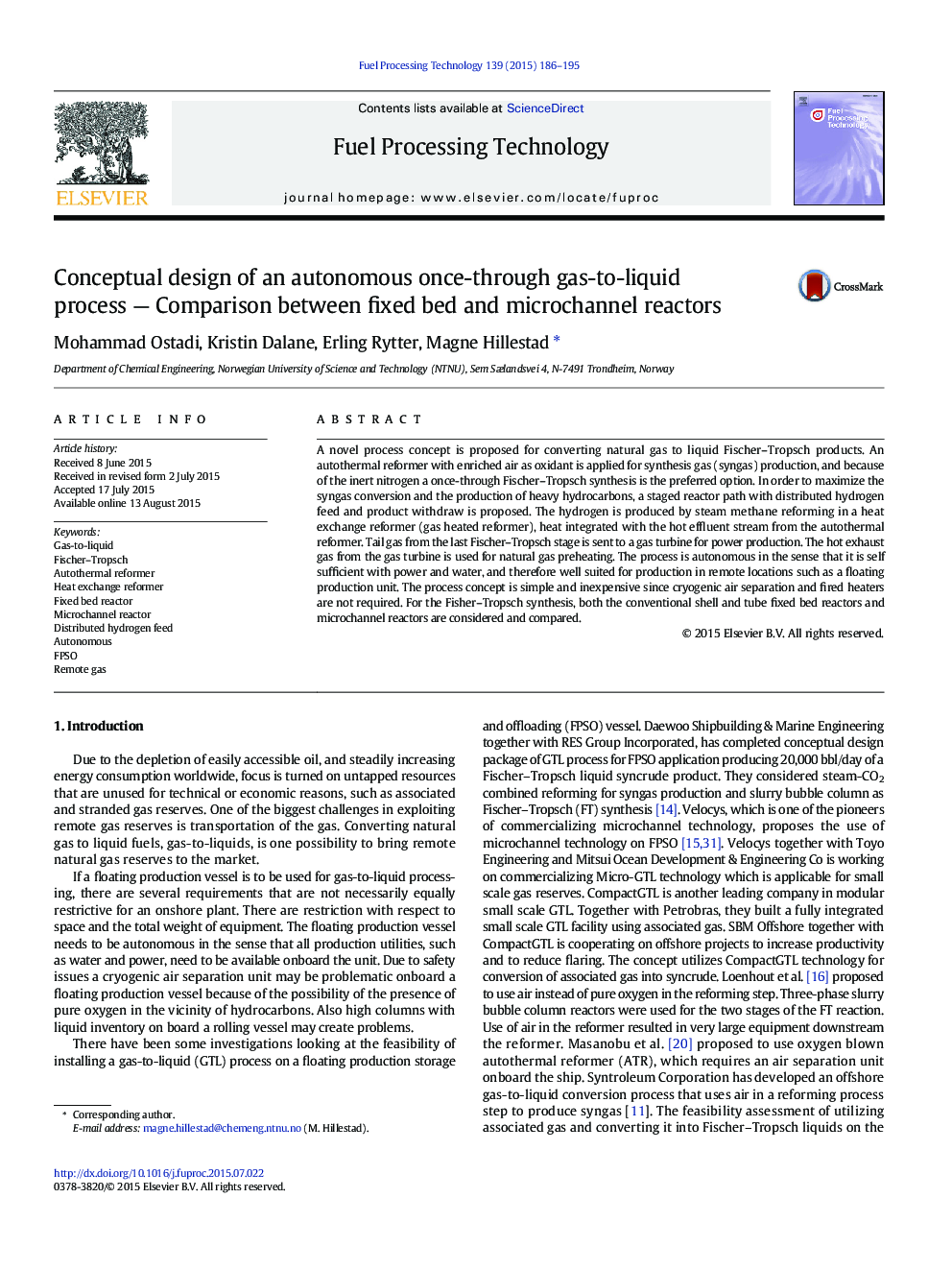| Article ID | Journal | Published Year | Pages | File Type |
|---|---|---|---|---|
| 209445 | Fuel Processing Technology | 2015 | 10 Pages |
•A one-through design with staged Fischer–Tropsch synthesis and with distributed hydrogen feed•Two parallel paths; one for syngas with slightly under-stoichiometric hydrogen and one for hydrogen•Comparing fixed bed and microchannel reactors for FT synthesis
A novel process concept is proposed for converting natural gas to liquid Fischer–Tropsch products. An autothermal reformer with enriched air as oxidant is applied for synthesis gas (syngas) production, and because of the inert nitrogen a once-through Fischer–Tropsch synthesis is the preferred option. In order to maximize the syngas conversion and the production of heavy hydrocarbons, a staged reactor path with distributed hydrogen feed and product withdraw is proposed. The hydrogen is produced by steam methane reforming in a heat exchange reformer (gas heated reformer), heat integrated with the hot effluent stream from the autothermal reformer. Tail gas from the last Fischer–Tropsch stage is sent to a gas turbine for power production. The hot exhaust gas from the gas turbine is used for natural gas preheating. The process is autonomous in the sense that it is self sufficient with power and water, and therefore well suited for production in remote locations such as a floating production unit. The process concept is simple and inexpensive since cryogenic air separation and fired heaters are not required. For the Fisher–Tropsch synthesis, both the conventional shell and tube fixed bed reactors and microchannel reactors are considered and compared.
